Hoya Bella: features, care and reproduction
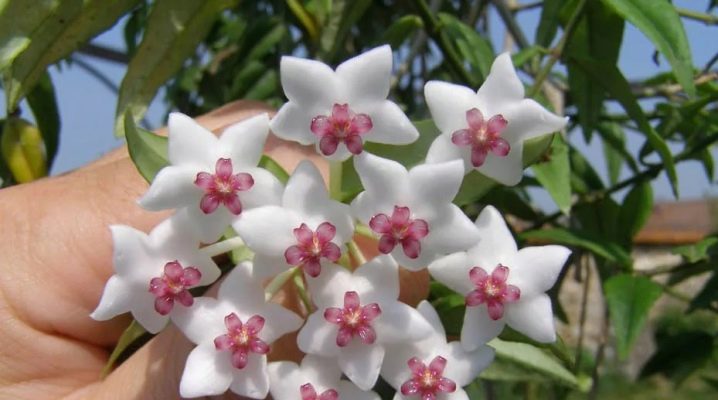
Hoya bella is an evergreen liana-like shrub of the Lastovnevye family. The habitat of this plant is India, Thailand, the south of China, the Pacific island territories and Australia. In nature, it grows like an epiphyte, using other plants for growth and development. The main feature, because of which it is very appreciated, is its unusual flowers.

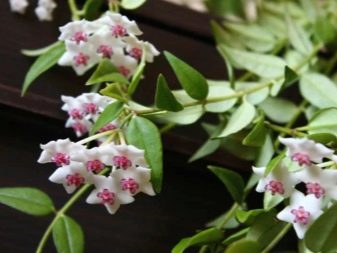
Description
Indoors, hoya bella is grown as an ampelous culture. Hanging pots are perfect for her cultivation. The roots of the plant are rather weak. So that they are not damaged the plant is planted in large, low pots. To add volume to the flower, several shoots are rooted in one container.
Hoya is a poisonous plant. It is worth remembering when working with it and placing it away from children and animals.
The shoots are quite long and very flexible. Their colors are grayish green. The stems are densely covered with small, diamond-shaped, narrow leaf plates, their top is smooth dark green, and the lower part is light, somewhat whitish. At the ends of the shoots, large umbellate inflorescences are formed, consisting of 7-9 extraordinary flowers. They have the shape of white stars with a lilac or pink convex center.
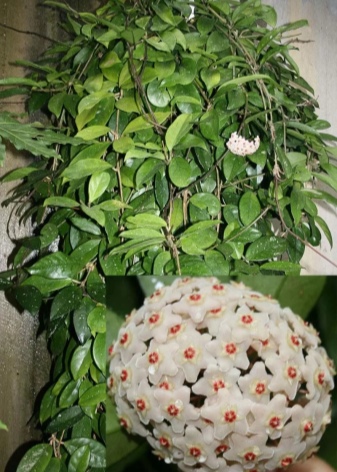
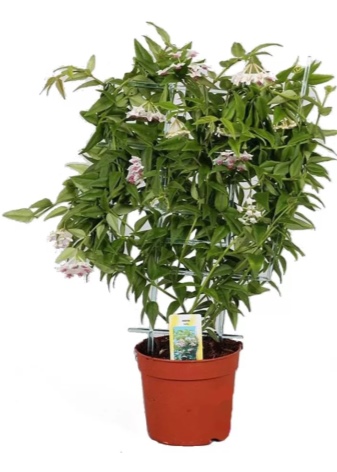
Flowering lasts from May to September, inflorescences last for about 2-3 weeks each. The flowers have a pleasant aroma; droplets of fragrant nectar can be seen on the petals. It must be remembered that the plant cannot be moved when buds appear and flowering, otherwise the flowers will fall off.

Varieties
Among the popular varieties of this plant, several can be distinguished:
- "Variegata" - variegated variety with yellow and light green stains on leaf plates;
- Luis Buiz also has variegated properties, the leaves are distinguished by lighter centers, framed by a green edging;
- "In and" with rather small leaves that are located close to each other, which makes the shoots look very lush;
- "Albomarginata" it is distinguished by the light color of the leaves, the edges of which are actually white.
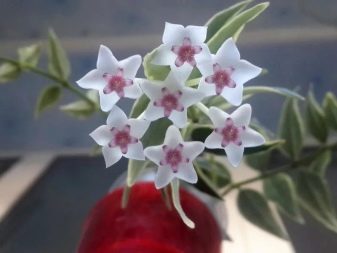
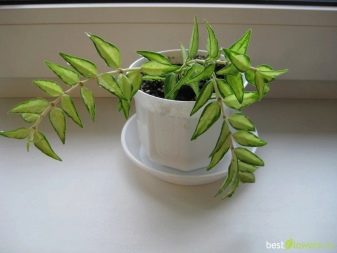

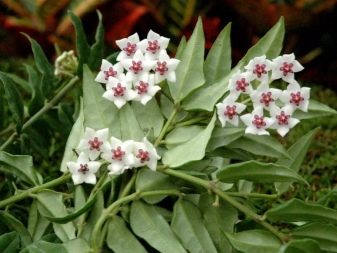
The necessary conditions
With proper care, hoya bella will delight for a long time with its lush shoots and spectacular flowers. At home, for the well-being of the beautiful hoya, it is necessary to create a certain environment in which it will be comfortable. It must be remembered that the plant reacts to any inconsistencies with the rules of care by dropping leaves and flowers.
- Lighting is not the main factor in flower care. Although the plant is light-loving, it does not suffer from a lack of light. It is better to shade from direct sunlight, as they can cause burns to the leaf plates.
- Optimum temperature in the warm season + 22– + 24 °, in winter it can drop to + 18 °. Hoya is afraid of sudden temperature changes and drafts.
- Watering carried out with soft water, you can use rain, filtered or well-separated, always at room temperature. It is worth moistening the plant when the topsoil dries up. During flowering, watered 2-4 times a week, at other times it is enough once every 2 weeks. In winter, the amount of watering is reduced. The remaining liquid from the pan must be poured out and not allowed to stagnate.
- Air humidity should not be very low. In dry air, as well as in hot weather, the flower is sprayed with water. Care must be taken so that liquid does not fall on the leaves.If this happens, it is better to blot the sheet with a napkin.
- Fertilizers are introduced from the beginning of spring to the end of summer. For this purpose, liquid complex fertilizers for indoor flowers are used and instructions are strictly followed when applied. Make about 2-3 times a month.
- Inflorescences that have dried up after flowering do not need to be removed: fruits may appear on them... In addition, new buds are also formed on previous peduncles.
- Wintering the plant carries out at the natural temperature in the room, but it must not be allowed to drop below + 18 °.
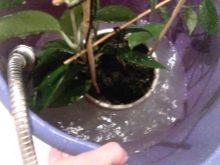
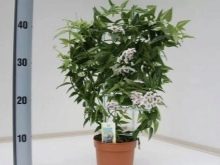
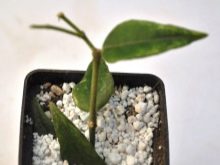
Transfer
It is recommended to transplant hoya bella immediately after purchase. A mixture of commercial orchid soil and sand is suitable as a substrate. You can try preparing the soil yourself. For this you need:
- 2 parts of sod land;
- 1 part compost;
- 1 part peat;
- 1 part sand;
- some sphagnum and charcoal;
- chopped pine bark.
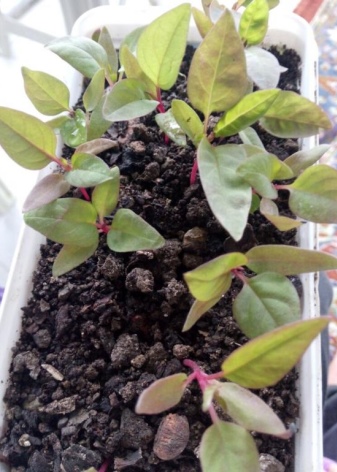
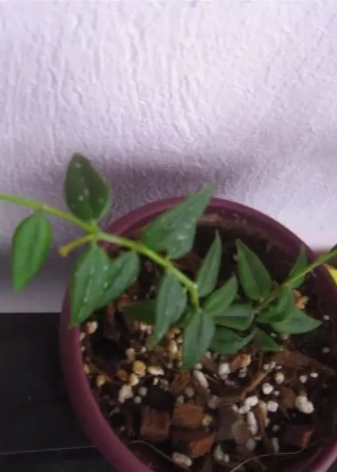
High-quality drainage must be placed on the bottom of the container. Hoya does not really like transplants and it is hard to endure them, so one in 3 years will be enough. It is carried out in early spring before the onset of the growing season. Since the root system of the plant is rather weak, it is transplanted by the transshipment method, that is, together with an earthen lump:
- a little soil is poured into a container a little more than the previous one;
- carefully place a flower in it;
- the rest of the soil is carefully poured from above.
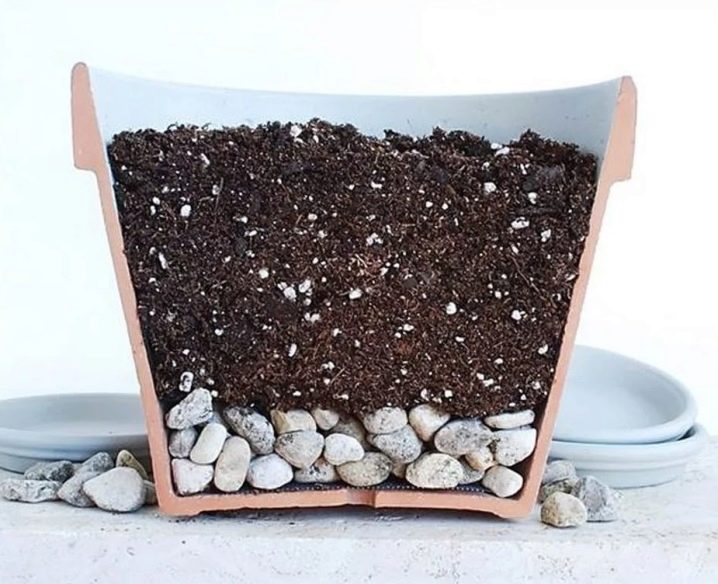
Reproduction
You can propagate beautiful hoya in several ways:
- seeds;
- sheets;
- cuttings;
- layering.

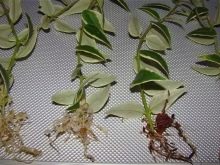
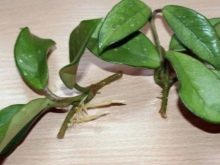
Sowing seeds is the most effective way of growing this plant, since it makes it possible to cultivate healthy and fairly resistant sprouts.
The disadvantage of this option is that the seedlings do not have specific varietal characteristics. Seed material is well dried before sowing. Seeds are planted in moist soil. So that they do not lose their susceptibility to germination, they are used immediately after collection or within a year.
They create greenhouse conditions: cover with foil or glass, not forgetting to moisturize and ventilate. A week later, the first seedlings begin to form - low shoots with a small number of leaves. In order for them to grow stronger and grow, it is necessary to follow certain rules:
- be sure to moderately moisten the soil, prevent drying out, as well as waterlogging;
- for the prevention of fungus, apply spraying with fungicides;
- do not use fertilizers.
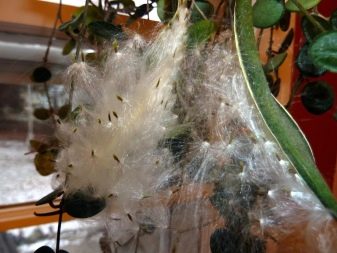
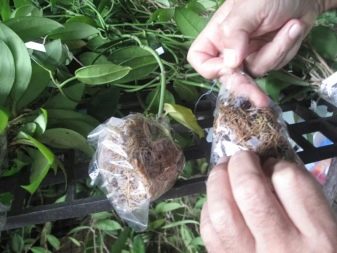
Hoya can be rooted with one leaf, although this method is not very popular, since it is not always possible to get a positive result.
- Without fail, the leaf plate is treated with drugs to stimulate root formation, otherwise the roots will not form. A little of the product is dripped into the middle of the leaf and allowed to drain down.
- Next, the leaf is planted in well-loosened soil slightly at an angle (the angle should be approximately 45 °). If there is a leaf with at least a tiny petiole, it is better to take it, as it will develop faster.

Propagation by cuttings - the easiest way and, moreover, a plant diluted in this way retains all the characteristics of the variety. It is carried out as follows:
- cuttings are cut from last year's shoots with 2 pairs of leaves;
- it is better to choose from the middle of the internode: these take root faster;
- shoots are placed in a container of water or planted in pots of peat;
- dishes with sprouts are placed in a well-lit warm place;
- after the roots appear, the plants can be transplanted to a permanent place, preferably 2-3 sprouts in one container.
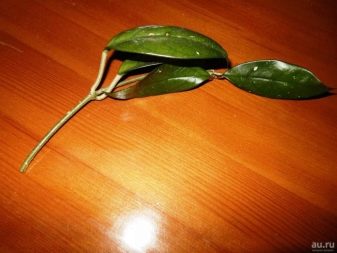
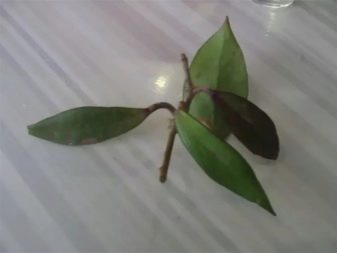
If they want to achieve flowering of a new plant in the first year after planting, propagation by stem layering is used.
- A long healthy shoot is chosen, a shallow incision is made on it and wrapped with well-moistened sphagnum.
- Fasten with soft thread and wrap in polyethylene.
- When the roots are formed, the stem is cut off and transplanted into a pot. It is recommended to plant at least 3 shoots at the same time.
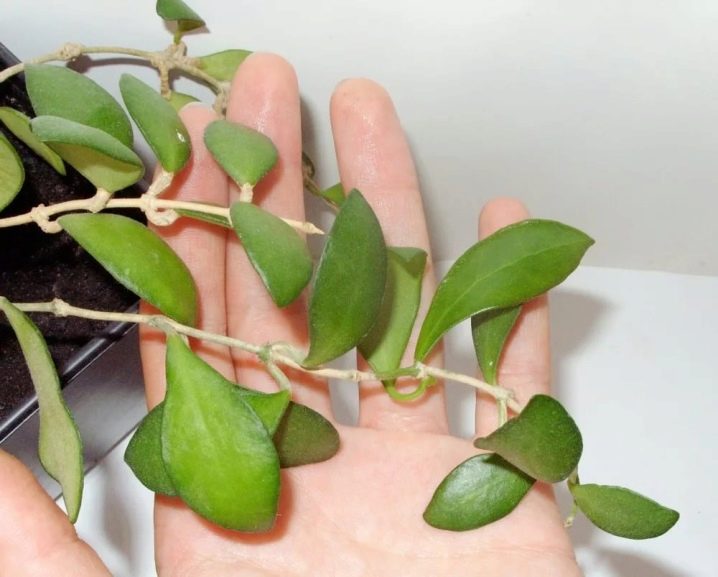
Diseases and pests
Hoya bella practically does not get sick, in some cases the flower may be affected by powdery mildew or root rot due to excessive moisture. Powdery mildew treatment consists of the following procedures:
- removal of leaf plates and shoots damaged by whitish bloom;
- replacement of the soil surface;
- plant treatment with fungicides.

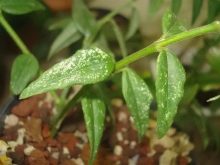

Root rot is usually incurable, since the roots of the hoya are weak and quickly die. To avoid such a situation, it is necessary to carefully treat watering and avoid waterlogging of the soil. If you do not follow the necessary rules for caring for the plant, you can provoke the following problems:
- spots on leaf plates can indicate both sunburn and lack of lighting, you need to change the location of the flower;
- foliage falls off - excessive moisture, too cold water for irrigation, or frequent changes in the location of the flower;
- falling flowers can happen from drafts, improper room temperature, plant movement;
- lack of flowering comes from poor lighting or abundant moisture in the winter;
- poor growth, nondescript leaves indicate a lack of nutrients in the soil.
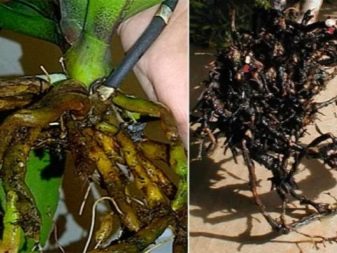
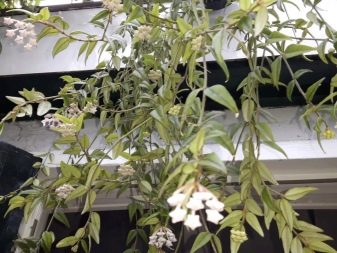
The plant can be damaged by pests: spider mites, mealybugs and scale insects. With dry air indoors, small red dots or spider threads appear on the back of the leaves - this is how spider mites manifest themselves. Small growths on the leaf blades indicate the appearance of a scale insect, and whitish glomeruli indicate traces of a mealybug.
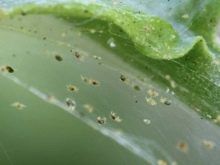
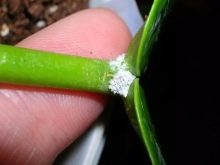

In order to combat, the plant is washed with soapy water and treated insecticidal preparations, for example, "Aktellikom" or karbofos.
You can also use folk remedies: garlic or onion tincture. Cover the soil during processing.
How to properly care for a plant, see below.


























The comment was sent successfully.